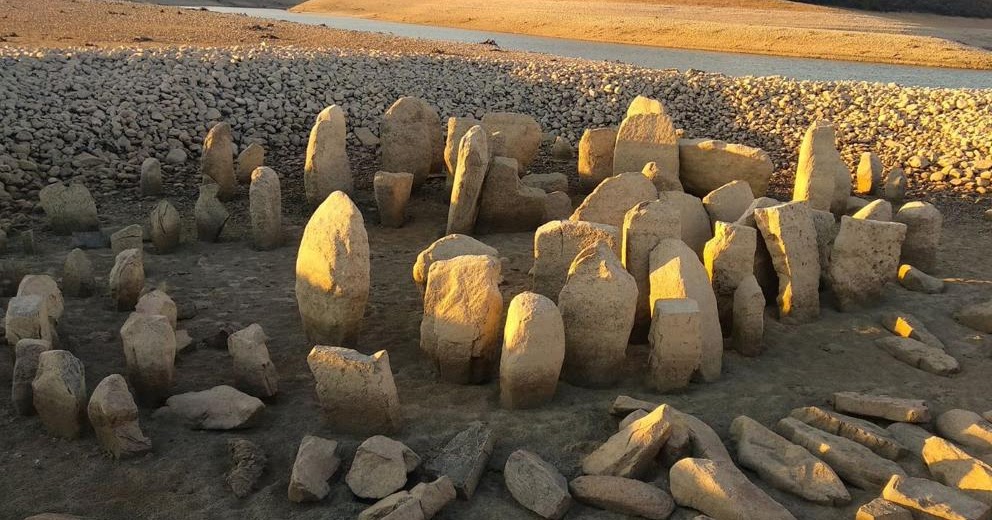
Likely used as both a temple and cemetery, the monument once featured menhirs, or tall upright stones, topped by horizontal slabs of stone to form an enclosed dolmen, which is a single-chambered tomb.

“If we don’t act now,” Castaño warns in another interview with Local’s Fiona Govan, “it could be too late.”Īccording to David Barreira of El Español, the Dolmen of Guadalperal consists of about 140 boulders arranged in a concentric circle. Cultural preservationists are calling to move the megaliths to a new location on dry land. Some show signs of erosion or have fallen over others are already cracking. Still, the dolmen’s reappearance isn’t wholly positive: Per a petition calling for the monument’s preservation, the granite stones that dot the archaeological site are highly porous. It’s spectacular because you can appreciate the entire complex for the first time in decades.” “I had seen parts of it peeking out from the water before, but this is the first time I’ve seen it in full. “All my life, people had told me about the dolmen,” Angel Castaño, resident of a nearby village and president of the local Raíces de Peralêda cultural association, tells Atlas Obscura’s Alyssa McMurtry. Nearly 60 years later, local news outlets report, the landmark widely known as “Spanish Stonehenge” has reemerged, freed from submersion in the Valdecañas Reservoir by an unusually severe drought season. The monument was finally seen in its entirety after 50 years, in 2019, when a NASA satellite picture revealed all the 150 stones during a drought.In 1963, the Dolmen of Guadalperal-a megalithic monument raised in the city of Cáceres, Spain, around 4,000 to 7,000 years ago-vanished from view. The most credited interpretations maintain that it was either used as a solar calendar or temple, a burial enclave or both.Īs a matter of fact, like many other sites, it could have originally been a solar temple, and then used as a burial place by later civilizations.įrequent inundations and its location within the Tagus River damaged the stones by eroding them and their engravings. This menhir has a snake carved on it, which is an interesting feature since it is a recurring symbol of many ancient cultures, tradition and religious iconographies, often found carved on megalithic structures and menhirs throughout the Earth, Stonehenge included. The oval shaped encircling is preceded by a corridor about 21 meters long, with a two meters high menhir at the end of it, right at the entrance of the chamber. Although menhirs are technically orthostats, the term is mainly used only to describe individual prehistoric stones that constitute part of larger structures). This kind of menhirs are also called orthostats (A term that indicated a large stone with a more or less slab-like shape that has been artificially set upright. The Dolmen of Guadalperal is made of 150 vertical standing granite stones, aligned to form an ovoid chamber with a diameter of about five meters. It is believed to have been built between 20 BCE.

Also known as the Spanish Stonehenge for its resemblance to the original English Stonehenge, the Dolmen of Guadalperal is a megalithic structure located in Peraleda de la Mata, in eastern Estremadura, Spain.īecause the monument is only visible when the waters of the Tagus River, in the Valdecanas reservoir, are low enough to reveal it, it is also called “the treasure”.


 0 kommentar(er)
0 kommentar(er)
